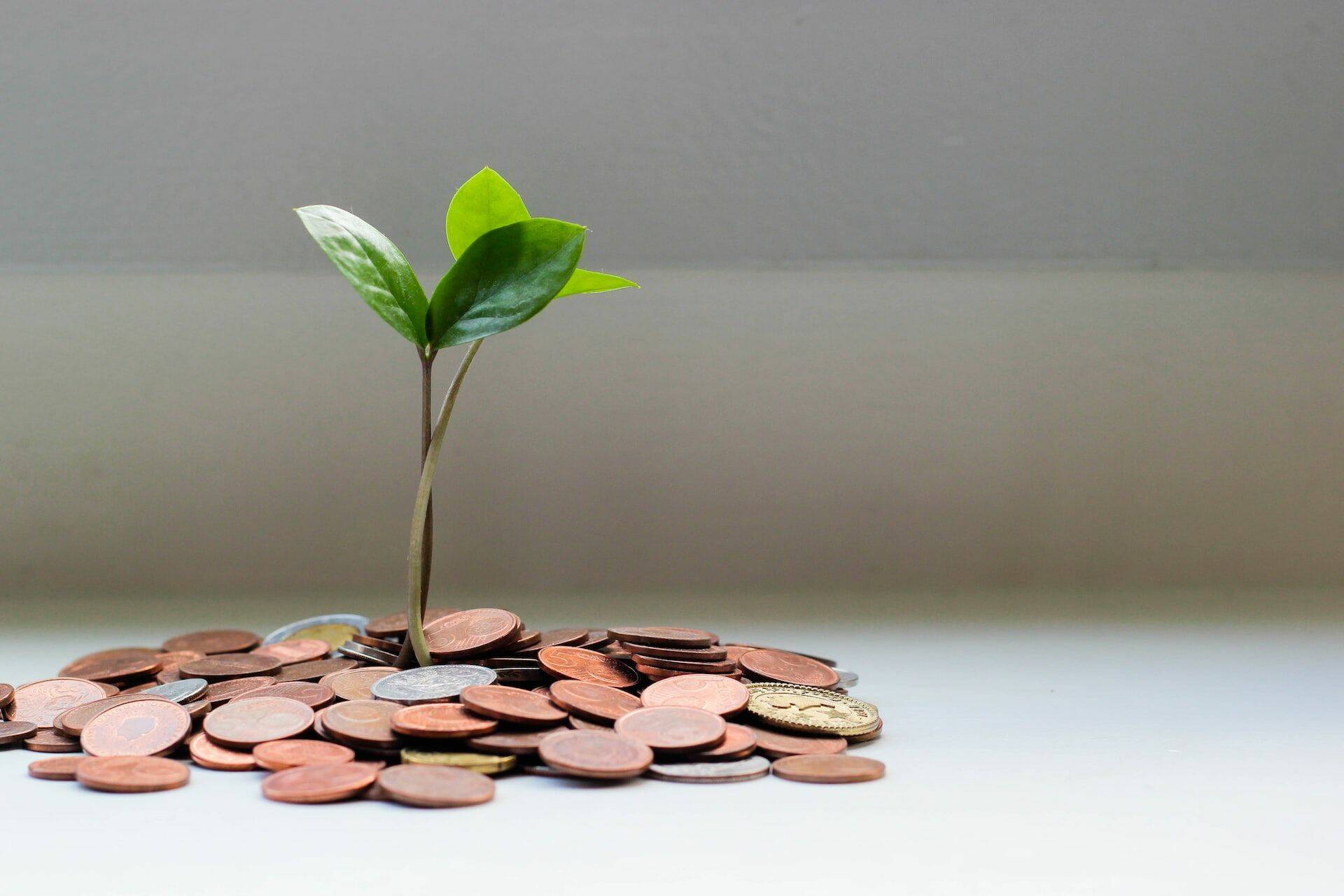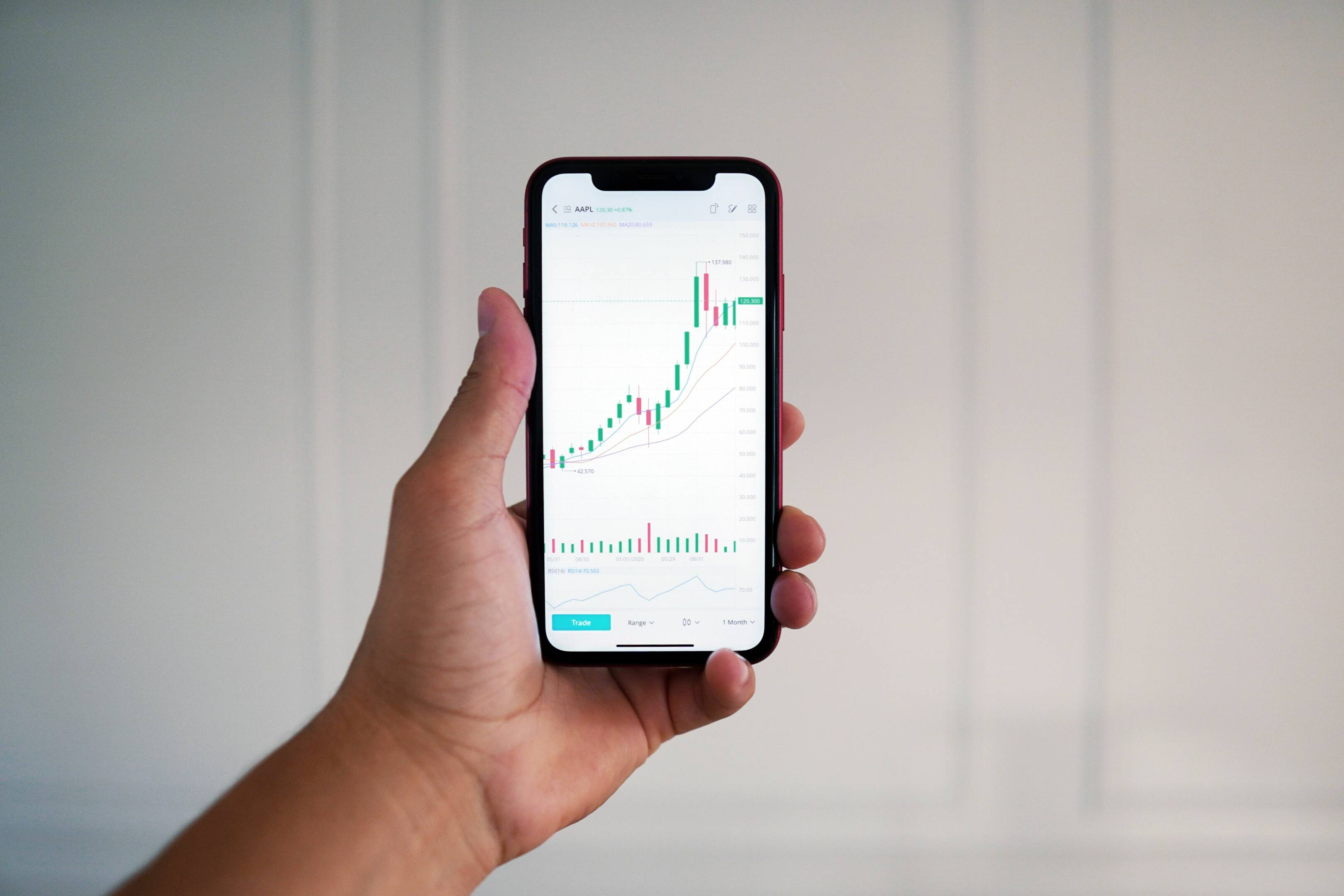
The future of finance and payments
DNA
Finance





Coming out of the pandemic, things were supposed to be different. Instead, the impact of the war in Ukraine and the subsequent cost-of-living crisis continue to cause significant challenges for consumers across the world.
The events of 2022 have had a notable and directly-felt impact on the personal finances of consumers. The Russian-Ukraine war, combined with wider inflationary pressures, have resulted in soaring energy prices and increased costs across the board for many consumers. 2023 is projected to be a year of weak global economic growth, with the International Monetary Fund (IMF) forecasting growth of 2.9%, a marked slowdown from the 3.4% growth expected for 2022.
It is against this backdrop that this Finance DNA report will explore the core trends that will shape the future of finance and payments over the coming decade. With the cost-of-living context sharply in focus, reviewing how the current economic situation will likely accelerate or impact the trajectory of the trends outlined.
The Cost-of-Living Crisis & Consumers
The Economic Backdrop
We have identified 10 key trends which will explore in detail the consumer shifts impacting finance and payments over the next decade. We will chart the Expected Trend Trajectory by visualizing its projected intensity in the next years – based on our objective analysis of the relative impact of consumer change in behavior and attitudes on the trend in question.
Finance DNA uncovers the actions and motivations of today’s consumer and provides recommendations for brands. Exploring both the short- and long-term implications of each trend, we provide a framework for brands to respond effectively to evolving consumer demands, attitudes and behaviors for the next decade.
A Now, Next, Future vision for Finance
Today we are continuing to live in an uncertain world. In the last few years, we’ve faced global political uncertainty, we’ve dealt with the disruption of a pandemic, and we are now coping with a spiraling cost of living crisis. But what does this mean for consumers and how can brands navigate today’s landscape?
In this new report, we explore the themes that will shape the next ten years in terms of consumer behavior and brand response in the Finance and Payments sector.
Inclusive Banking

Banking Goes Green
Financial Wellness

Want to find out more?
The ten trends your brand must master today
TREND ONE
Financial Wellness
As wellbeing needs continue to expand in the 2020s, financial wellness is increasingly recognized by consumers as just another contributing factor of holistic health. Seeking financial empowerment and control over finances, consumers will turn to new and fragmented sources of influence for support. Looking ahead, expect financial wellbeing and literacy to become a core focus for consumers and brands alike, as the link between healthy finances and happiness is further underscored by the cost-of-living crisis.



TREND TWO
Banking Goes Green
In the years to come, climate change will remain the dominant global threat, with over half (58%) of global consumers feeling personally at risk of its effects over the next five years. This is prompting consumers to adopt eco-ethical values which are transforming their relationship with the products and services they interact with on a daily basis. These values-based consumer behaviors have entered banking, with sustainable credit cards, impact investing and ESG strategies now commonplace.



TREND THREE
Inclusive Banking
As consumer demands shift from passive inclusivity to active empowerment, companies in all sectors, including banking and finance, will be increasingly expected to not just represent but more actively cater to and empower ever-more diverse customers, communities and needs. Targeting specific groups will enable financial service providers to better connect with customers’ values and experiences on a meaningful level, while general promises of inclusivity will appear inadequate. Looking ahead, expect financial inclusion to become a widespread aim across the banking and finance industry, as brands try to help consumers from all backgrounds build a more financially secure future.


TREND FOUR
Humanized Banking
In the 2020s, expect growing demand for more human, natural and empathetic brand interactions via all channels (as a counter-trend to the rise of more automated financial services). Indeed, there is growing expectation that financial brands offer avenues to human service where needed and that digital or automated services embed human-like propositions to provide a more consistent customer experiences across offline and online channels.


TREND FIVE
Purposeful Rewards
In the 2020s, rewarding consumers for adopting behaviors that promote some form of social good and benefit will be a key feature of B2C loyalty programs. In particular, rewards will be aimed at nudging more eco-friendly and healthy habits. Moreover, the finance/banking and insurance sector is optimally placed to capitalize on this trend due to the sector's ability to access spending data to monitor and reward such behaviors.



TREND SIX
New Payment Frontiers
Driven by the increased digitization of payment technologies, the COVID-19 pandemic, and the growing need for convenience in point-of-sale (POS) systems, consumers are increasingly seeking different ways to make payments. Considering the recent technological advances in contactless payment infrastructures, consumers are making use of more digital payment methods, which are slowly becoming the default. In the coming years, digital technologies will allow consumers to use a range of payment methods, from e-wallets to cryptocurrencies, further increasing expectations and making the POS more efficient and convenient than ever.




TREND SEVEN
The Investment Revolution
The emergence of trading apps and the growing sophistication of Artificial Intelligence (AI) is set to revolutionize, and democratize, who and how consumers invest. Meanwhile, fractional shares will be key to encouraging a wider audience to start investing with small amounts. While the current cost-of-living crisis will dampen the pace of this trend, as consumers look to shorter-term financial planning, the desire to build long-term resilience and maximize savings will see this trend full energized later in the 2020s.



TREND EIGHT
The Credit Makeover
Though traditionally consumers have relied on credit cards to avoid paying the full price of products up front, the rise of the option to buy now, pay later (BNPL) has empowered consumers with cheaper and more flexible credit options than ever. In the 2020s, BNPL is set to become an increasingly popular way to pay for products and services. But as the cost-of-living crisis continues, and awareness of the importance of financial wellbeing grows, consumers will look for ways to reduce the amount of credit they take on—also raising calls for more ethical financing alternatives.


TREND NINE
AI-Powered Insurance
The growing sophistication of AI technology is set to transform the experience of buying insurance and making claims. From automating the issuing and claims process of insurance, to being able to respond to real-time events via the use of advanced data collection and smart environments, consumers in the 2020s will have access to more efficient and on-demand insurance services supporting them in their quest to build personal resilience to future financial and climate risk.


TREND TEN
Branches Reinvented
With ever more of life’s activities moving online, financial service providers will continue to evolve the digital and offline customer experience to better serve consumers. More banks will close low-traffic retail outlets to streamline their network of branches and will innovate to ensure that their online systems and spaces are seamless, easy to access and complementary to offline services. Looking ahead, financial services will expand into emerging virtual worlds while also reimagining the role of the traditional bank branch—utilizing pop-up and multi-use spaces to provide customers with a range of benefits in addition to financial assistance.


The future of finance and payments
DNA
Finance

Coming out of the pandemic, things were supposed to be different. Instead, the impact of the war in Ukraine and the subsequent cost-of-living crisis continue to cause significant challenges for consumers across the world.
The events of 2022 have had a notable and directly-felt impact on the personal finances of consumers. The Russian-Ukraine war, combined with wider inflationary pressures, have resulted in soaring energy prices and increased costs across the board for many consumers. 2023 is projected to be a year of weak global economic growth, with the International Monetary Fund (IMF) forecasting growth of 2.9%, a marked slowdown from the 3.4% growth expected for 2022.
It is against this backdrop that this Finance DNA report will explore the core trends that will shape the future of finance and payments over the coming decade. With the cost-of-living context sharply in focus, reviewing how the current economic situation will likely accelerate or impact the trajectory of the trends outlined.
The Cost-of-Living Crisis & Consumers
The Economic Backdrop



We have identified 10 key trends which will explore in detail the consumer shifts impacting finance and payments over the next decade. We will chart the Expected Trend Trajectory by visualizing its projected intensity in the next years – based on our objective analysis of the relative impact of consumer change in behavior and attitudes on the trend in question.
Finance DNA uncovers the actions and motivations of today’s consumer and provides recommendations for brands. Exploring both the short- and long-term implications of each trend, we provide a framework for brands to respond effectively to evolving consumer demands, attitudes and behaviors for the next decade.
A Now, Next, Future vision for Finance
Today we are continuing to live in an uncertain world. In the last few years, we’ve faced global political uncertainty, we’ve dealt with the disruption of a pandemic, and we are now coping with a spiraling cost of living crisis. But what does this mean for consumers and how can brands navigate today’s landscape?
In this new report, we explore the themes that will shape the next ten years in terms of consumer behavior and brand response in the Finance and Payments sector.
Branches Reinvented
AI-Powered Insurance

The Credit Makeover
The Investment Revolution

New Payment Frontiers
Purposeful Rewards

Humanised Banking
Inclusive Banking

Banking Goes Green
Financial Wellness

Want to find out more?
The ten trends your brand must master today
TREND ONE
Financial Wellness
As wellbeing needs continue to expand in the 2020s, financial wellness is increasingly recognized by consumers as just another contributing factor of holistic health. Seeking financial empowerment and control over finances, consumers will turn to new and fragmented sources of influence for support. Looking ahead, expect financial wellbeing and literacy to become a core focus for consumers and brands alike, as the link between healthy finances and happiness is further underscored by the cost-of-living crisis.

TREND TWO
Banking Goes Green
In the years to come, climate change will remain the dominant global threat, with over half (58%) of global consumers feeling personally at risk of its effects over the next five years. This is prompting consumers to adopt eco-ethical values which are transforming their relationship with the products and services they interact with on a daily basis. These values-based consumer behaviors have entered banking, with sustainable credit cards, impact investing and ESG strategies now commonplace.


TREND THREE
Inclusive Banking
As consumer demands shift from passive inclusivity to active empowerment, companies in all sectors, including banking and finance, will be increasingly expected to not just represent but more actively cater to and empower ever-more diverse customers, communities and needs. Targeting specific groups will enable financial service providers to better connect with customers’ values and experiences on a meaningful level, while general promises of inclusivity will appear inadequate. Looking ahead, expect financial inclusion to become a widespread aim across the banking and finance industry, as brands try to help consumers from all backgrounds build a more financially secure future.
In the 2020s, expect growing demand for more human, natural and empathetic brand interactions via all channels (as a counter-trend to the rise of more automated financial services). Indeed, there is growing expectation that financial brands offer avenues to human service where needed and that digital or automated services embed human-like propositions to provide a more consistent customer experiences across offline and online channels.
TREND FOUR
Humanized Banking

TREND FIVE
Purposeful Rewards
In the 2020s, rewarding consumers for adopting behaviors that promote some form of social good and benefit will be a key feature of B2C loyalty programs. In particular, rewards will be aimed at nudging more eco-friendly and healthy habits. Moreover, the finance/banking and insurance sector is optimally placed to capitalize on this trend due to the sector's ability to access spending data to monitor and reward such behaviors.


TREND SIX
Driven by the increased digitization of payment technologies, the COVID-19 pandemic, and the growing need for convenience in point-of-sale (POS) systems, consumers are increasingly seeking different ways to make payments. Considering the recent technological advances in contactless payment infrastructures, consumers are making use of more digital payment methods, which are slowly becoming the default. In the coming years, digital technologies will allow consumers to use a range of payment methods, from e-wallets to cryptocurrencies, further increasing expectations and making the POS more efficient and convenient than ever.
New Payment Frontiers

The emergence of trading apps and the growing sophistication of Artificial Intelligence (AI) is set to revolutionize, and democratize, who and how consumers invest. Meanwhile, fractional shares will be key to encouraging a wider audience to start investing with small amounts. While the current cost-of-living crisis will dampen the pace of this trend, as consumers look to shorter-term financial planning, the desire to build long-term resilience and maximize savings will see this trend full energized later in the 2020s.
TREND SEVEN
The Investment Revolution

Though traditionally consumers have relied on credit cards to avoid paying the full price of products up front, the rise of the option to buy now, pay later (BNPL) has empowered consumers with cheaper and more flexible credit options than ever. In the 2020s, BNPL is set to become an increasingly popular way to pay for products and services. But as the cost-of-living crisis continues, and awareness of the importance of financial wellbeing grows, consumers will look for ways to reduce the amount of credit they take on—also raising calls for more ethical financing alternatives.
The Credit Makeover
TREND EIGHT

TREND NINE
AI-Powered Insurance
The growing sophistication of AI technology is set to transform the experience of buying insurance and making claims. From automating the issuing and claims process of insurance, to being able to respond to real-time events via the use of advanced data collection and smart environments, consumers in the 2020s will have access to more efficient and on-demand insurance services supporting them in their quest to build personal resilience to future financial and climate risk.

TREND TEN
Branches Reinvented
With ever more of life’s activities moving online, financial service providers will continue to evolve the digital and offline customer experience to better serve consumers. More banks will close low-traffic retail outlets to streamline their network of branches and will innovate to ensure that their online systems and spaces are seamless, easy to access and complementary to offline services. Looking ahead, financial services will expand into emerging virtual worlds while also reimagining the role of the traditional bank branch—utilizing pop-up and multi-use spaces to provide customers with a range of benefits in addition to financial assistance.
Contact us
Back to top
Finance DNA: Understanding your consumer now and in the future
Download the full report now









